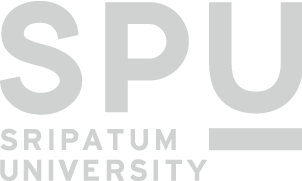
SPU Measures Food Waste Ratio to Drive Informed Sustainability Policies
Sripatum University (SPU) is advancing its sustainability initiatives by conducting a detailed assessment of its food waste ratio — a critical step in addressing global goals under SDG 2: Zero Hunger and SDG 12: Responsible Consumption and Production. This new data-driven approach allows SPU to create targeted policies that reduce waste, cut costs, and support sustainable campus operations.
The study found that food waste accounted for 8.42% of total solid waste generated from the university’s canteens. This figure provides key insight into waste behaviors and directly supports SDG 2.2.2, which promotes measuring food waste as a precursor to reducing it. The information enables SPU to design more responsive initiatives, such as dynamic meal planning, portion-size optimization, and source-level intervention.
This work complements SPU’s composting, food donation, and educational programs by ensuring that interventions are informed by accurate baseline data. The findings will also guide SPU’s future technologies, including potential smart bins and AI-powered waste tracking systems that reduce environmental footprint — aligning with SDG 12.3.1 and SDG 9.5.1.
By collecting, analyzing, and applying food waste data, SPU sets a strong example of evidence-based policy driving sustainable transformation in higher education.
SPU ประเมินสัดส่วนขยะอาหารเพื่อขับเคลื่อนนโยบายความยั่งยืนอย่างเป็นระบบ
มหาวิทยาลัยศรีปทุม (SPU) ยกระดับการดำเนินงานด้านความยั่งยืนด้วยการประเมิน สัดส่วนขยะอาหารภายในมหาวิทยาลัย อย่างเป็นระบบ ซึ่งเป็นก้าวสำคัญที่สนับสนุนเป้าหมายระดับโลกตาม SDG 2: ขจัดความหิวโหย และ SDG 12: การบริโภคและการผลิตอย่างยั่งยืน โดยข้อมูลเชิงปริมาณนี้ช่วยให้มหาวิทยาลัยสามารถออกแบบนโยบายที่ตรงจุด ลดของเสีย และลดค่าใช้จ่ายในระยะยาว
ผลการศึกษาแสดงว่า ขยะอาหารคิดเป็น 8.42% ของปริมาณขยะรวม จากโรงอาหารของ SPU ซึ่งข้อมูลนี้ชี้ให้เห็นพฤติกรรมการบริโภคและการสูญเสียที่ต้องจัดการ และตอบสนองต่อ SDG 2.2.2 ที่เน้นการวัดปริมาณขยะอาหารเพื่อวางแผนการลดในอนาคต มหาวิทยาลัยจึงสามารถพัฒนาแนวทางเฉพาะ เช่น การวางแผนเมนูตามความต้องการจริง การลดขนาดจานอาหาร และการลดสูญเสียตั้งแต่กระบวนการต้นทาง
การดำเนินงานนี้ยังเสริมความแข็งแกร่งให้กับระบบหมักปุ๋ย บริจาคอาหาร และกิจกรรมส่งเสริมจิตสำนึกที่มีอยู่ โดยการใช้ข้อมูลจริงมาเป็นฐานในการพัฒนา ทั้งยังสนับสนุนการวางแผนเทคโนโลยีในอนาคต เช่น ถังขยะอัจฉริยะ และ ระบบติดตามขยะด้วย AI ซึ่งตอบโจทย์ SDG 12.3.1 และ SDG 9.5.1
SPU แสดงให้เห็นถึงศักยภาพของการใช้ข้อมูลเพื่อขับเคลื่อนการเปลี่ยนแปลงที่ยั่งยืนในระดับอุดมศึกษา


